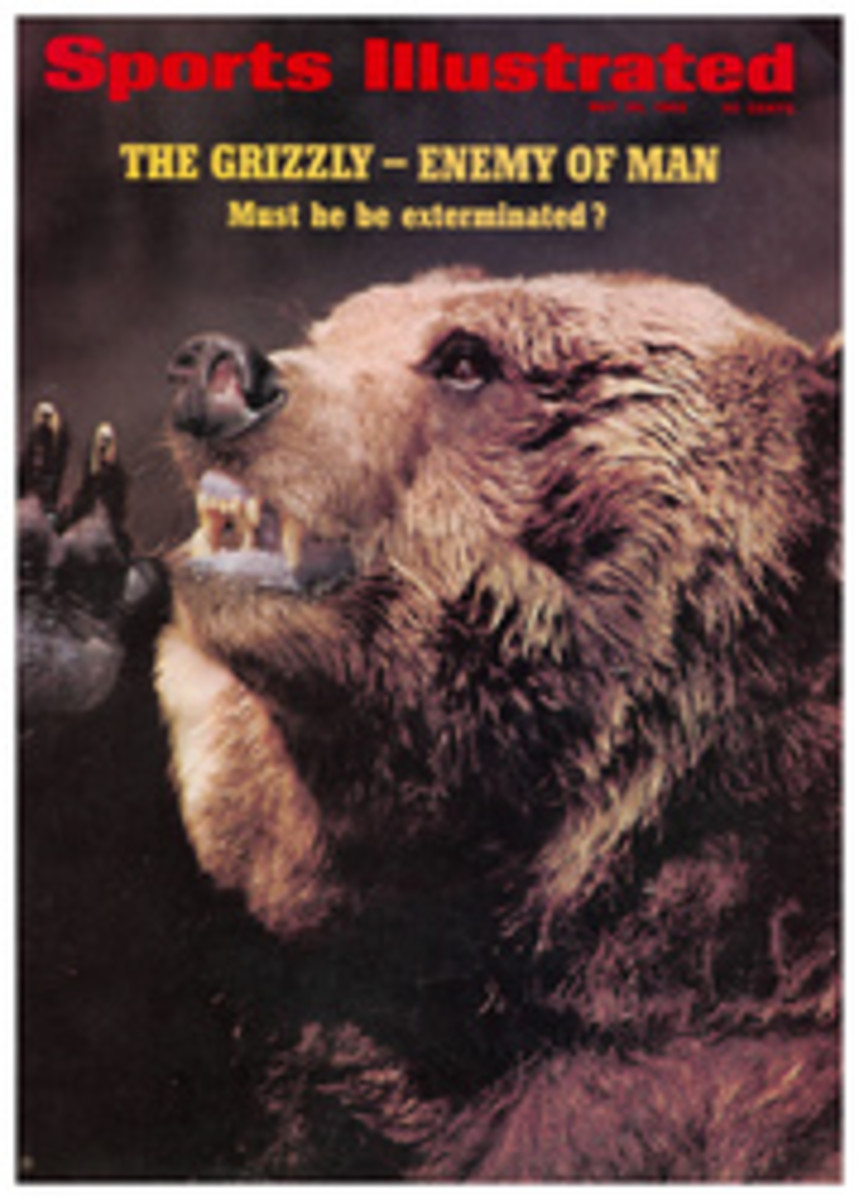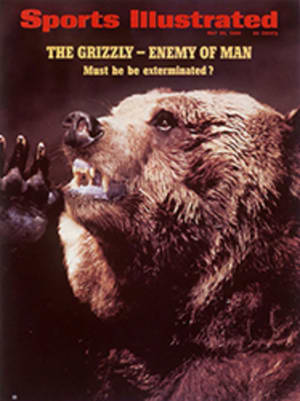
A RAIN CHECK ON SPEED AT INDY
Gasoline Alley at the Indianapolis Motor Speedway is a place where mechanics lovingly tweak $50,000 racing machines, flamboyant owners hold court and drivers play gin, shoot craps or otherwise pass the nervous, idle hours during the long days that precede the 500. Gasoline Alley is also a nice place to go when it is raining, and that is where most everybody was last weekend, when time trials to determine the 33 starting positions for the 53rd 500 were supposed to begin. But as Singer O. C. Smith, who knows his little green apples, suggests, it does rain in Indianapolis—and in the spring as well as in the summertime. On Saturday, when the interesting questions that had been posed since the Speedway opened May 1 were due to be answered, the only thing running on the 2½-mile track was water.
Despite the morning's continuous drizzle, about 150,000 spectators poured into the Speedway, and most did not pour out again until 5:30 p.m., when Chief Steward Harlan Fengler called it a day. For their patience the fans got just one attempted qualifying run. That was by Leon Duray (Jigger) Sirois, a rookie from nearby Hammond, Ind. At 4:10 p.m., after a break in the rain had allowed the track to dry, Sirois, who had drawn the No. 1 qualifying position, completed his four-lap run. His crew, however, decided not to accept his time but to try again later, since it would have been nearly as slow as the qualifying speed of the slowest car in last year's race, and Sirois probably would have been the first pole sitter in Indy history to be bumped from the starting field. After Sirois finished, having blown forever his chance for a place in the record book, asterisk and all, the rains returned to frustrate drivers and fans.
On Sunday the crowd was down sharply and the weather was wet again, so for the first time ever the first qualifying weekend was entirely washed out. This meant that nobody will get another chance to qualify until this weekend. "The pressure will be on," said defending champion Bobby Unser. He might have added not only to qualify but to get the cars properly set up for the race itself, less than a week later.
But even if Speedway Owner Tony Hulman himself has to fill out the starting field (allowable as a last resort), nothing will shake the trackside conviction that this year's race is quietly shaping up as the most competitive in recent years—not forgetting the 1968 event, which was one of the best. (For sure this one will be the richest. Prize, lap and accessory money will bring the total to nearly $800,000.)
This is a year of consolidation at the Speedway: there are no turbines to shake the Establishment, no steam cars to shatter it completely. Nearly every team of importance is using fairly conventional equipment, which means either a Ford or Offenhauser turbocharged engine mounted in the rear of a rather familiar chassis. The four fastest cars in practice were all Ford-powered, and the first two belonged to drivers who have vied, with varying degrees of cordiality, for supremacy in the United States Auto Club's championship division for the past five years—Mario Andretti and A.J. Foyt. Andretti, the diminutive Italian-born driver who dazzled Indy in 1965 by qualifying fourth and finishing third, and who took the USAC driving title away from Foyt in 1965 and 1966, showed up in a wedge-shaped, four-wheel-drive Lotus owned by the old turbine terror Andy Granatelli. Since his first year Andretti has had horrendous racing luck at the Speedway, and if two negatives (Granatelli has been trying to win a 500 since 1946) make a positive, Mario is in. Despite sitting on the pole twice before, Andretti has logged only 237.5 miles of actual Indy running since 1965. "I am not superstitious, and I don't believe in jinxes in 500 racing," Mario said, well aware that plenty of gloomsmen do in fact consider him hexed.
Foyt, a three-time winner (nobody has won four times), showed up with a big grin, immediately making everybody else nervous, and some immaculately prepared cars of his own conventional design. While Andretti and other drivers fiddled around with rear spoilers, front spoilers and even side spoilers, Foyt left the slippery cigar shape of his Coyotes pretty much alone. With his two experienced team drivers—Roger McCluskey and George Snider—he spent a lot of time shut off from the tight little Gasoline Alley community in three unmarked garages.
On the racetrack A.J. and Mario avoided each other. Foyt had the early edge in speed, but on May 12 Andretti did the year's first 170-mph lap. By the week's end he was up to 171.789 mph while Foyt had climbed to 170.908, all amid speculation that one, or both, were sandbagging and would do maybe some 174-mph laps when things got really serious during qualifications.
McCluskey got into the high numbers, too, finishing practice with a 170.283 lap. In the fourth fastest Ford, a four-wheel drive Lola owned by Parnelli Jones and prepared by Foyt's former chief mechanic, George Bignotti, Al Unser looked formidable—until late Saturday afternoon, when he broke his left leg just above the ankle in a motorcycle spill behind the garage area. Possible replacements for Unser were Jackie Stewart, the Scotsman who nearly won the 500 in 1966 and currently leads the Grand Prix point standings, New Zealand's Chris Amon, America's Carl Williams—or possibly Jones himself.
The Fords unquestionably have the early speed; whether they can last for 500 miles is the big question. In practice a number of the engines have failed and have had to be replaced. It was a turbocharged Offy driven by Bobby Unser, of course, which won last year, and although the best Offy practice speed this May was nearly four miles an hour slower than Andretti's, the old four-bangers might be the only cars left on the track by late afternoon on race day.
The fastest Offenhauser is the yellow and red No. 4 of Lloyd Ruby, a veteran of nine 500s who has run more competitive Indy miles—3,902.5—than any other active driver and feels he should already have two victories to his credit. In 1966 he was black-flagged while holding a 48-second lead with 50 laps to go, and he was leading late in the race last year when an electrical coil flukishly came unglued. The quiet Texan, who at 41 claims he still races only because he doesn't want to go to work, believes the Fords will break, but he admits, "The Fords are faster. I'll have to draft to stay with the leaders."
Other contenders are Joe Leonard, last year's turbine hero, now driving a Ford for Smokey Yunick; Dan Gurney, the All-America dimple, who will try again in an updated version of his stock-block Ford which finished second last year, and Mark Donohue, driving a Roger Penske-prepared Offy Lola. At 167.069 mph Donohue is already the second fastest rookie in Speedway history.
So far, at least, the foreign contingent is amazingly out of the picture. Graham Hill, the 1966 winner, could not get his Lotus-Ford, a sister car of Andretti's, beyond 162 mph, and Denis Hulme, driving Gurney's second car, wasn't much faster. Neither was at the Speedway last weekend, but rather fighting for world championship points in the Monaco Grand Prix (which Hill won). They were perhaps the only people connected with the 500 who were happy with the rains.
Jochen Rindt is supposed to drive a Lotus-Ford, but he is still recovering from injuries suffered during the Spanish Grand Prix three weeks ago. Jack Brabham has two cars entered, one to be driven by rookie Peter Revson, but probably won't drive himself.
The importance of the entire month's pre-race activity, normally highlighted by two full qualification weekends, is debatable. Purists argue that the Speedway is a testing ground, and that the long hours and tedious days are necessary to bring along the intricate pieces of machinery at the proper pace. And, as one Indianapolis native said, "Indy is more than just the race. Even if you try to ignore it, you can't. It's like a circus. You just get caught up, and in the end you can't fight it."
The month begins slowly, peaks for qualifications, then takes a breather before the final, nervous push which leads to the race itself. The regimented formality of track procedure especially annoys the Europeans, who rarely take more than a few days to practice for and complete a major race. "My God," said Denis Hulme, "you've got to go back to the garage to even load up with gas. In Europe we'll rebuild the whole bloody car in the pits. I came here on May 6 and didn't get on the track until the 11th."
No doubt Hulme and all the other contenders will be on the track and ready when it counts, on Memorial Day, and sometime in the middle of the afternoon the labors of the long, sweaty month will seem worthwhile, to one man at least. That man may well be steady old Lloyd Ruby.
PHOTO
Ford's Mario Andretti, fastest in practice, glumly holds an umbrella against the Saturday rain.

